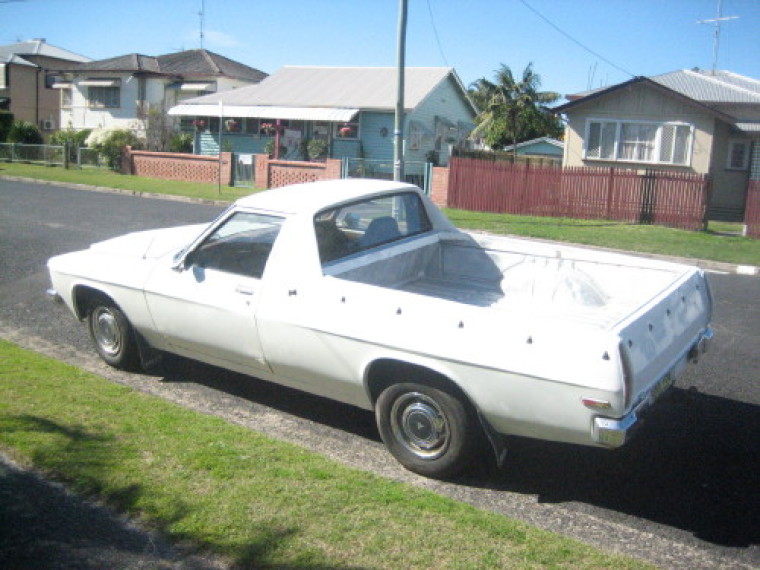
The word 'ute' can be confusing to those not used to the Australian accent. An English acquaintance of mine, married to an Australian and enjoying a road trip, was enquiring at a country town about how to get into the local camping area. She was told that she needed to get the key from the bloke in the ute, just around the corner.
Not understanding what this meant, she carefully rehearsed the phrase under her breath 'bloke-ina-ute' 'bloke-ina-ute' until she got back to her husband, waiting in the car. He understood immediately and laughed his head off, and for the rest of their holiday they would point out all the unusual things they saw in utes. The most amusing was 'a ewe in a ute'.
Nowadays, the ute even has its own specialty events called 'ute musters', where proud owners get together with their decorated vehicles to show them off at a social event.
http://www.whitehat.com.au/Australia/Inventions/InventionsA.html
The Power House Museum (the science/technology museum near Darling Harbour in Sydney) provides a more detailed account of the Ute. In 1932 a farmer wrote to the boss of Ford Australia to ask, 'Please make a two-in-one car and truck, something I can go in to church on Sunday, and carry pigs to market on Monday.'
Lewis Bandt was given the job to develop such a multi-purpose car. His solution was to graft a high-sided open or 'utility' back onto a two-door Ford V8 Coupe. What made it different from a truck was that the interior was as luxurious as the original coupe, and the side panels and roof were pressed in steel like a car.
The 'ute' was introduced in 1934 by both Ford and General Motors – Holden. It was an immediate success and the idea was soon copied by car makers in Australia and overseas. The 1934 utilities were sent to Ford in the USA where they became known as 'kangaroo chasers'. These early samples inspired the 1956 US Ford Ranchero and other utes worldwide. However, the current US version such as the Ford F100, is called a 'pick-up truck' and is a much heavier, larger vehicle. They were never a big-selling item in Australia.
http://www.powerhousemuseum.com/australia_innovates/?behaviour=view_article&Section_id=1080&article_id=10085
Well-Being Australia chairman mark Tronson thinks the ute represents something of the Australian character, which the larger pick-up truck does not capture. The ute is compact, with clean lines and matches the rather rakish laid-back attitude of the Australian culture. It is also extremely practical.
Having a sedan's cabin means that women feel comfortable travelling in it or driving it, and it can just as easily be a town car as a farm vehicle. In more recent years, you have been able to purchase a 4-door cabin which can seat the whole family in comfort and safety.
Other advantages are its price and its versatility. Utes are sold at a reasonable price, cheaper than a small truck; and the tyres and repairs are also as cheap as those of a sedan. The ute can be a tradesman's vehicle or the weekend warrior's vehicle; or, when the back is enclosed, as is easily done, it can be the beach panel-van or camper-van.
Many young men in Australia have had a love affair with the ute; purchasing one (new or second hand) is seen as one of the symbols of manhood, irrespective of whether it is needed for any practical purpose. For those who are a bit more mature, a ute can be a status symbol. Many a sportsman drives the latest model, as do businessmen in all walks of life.
M V Tronson recently heard a story about a colleague; a theologian and university college master. He was to be provided with a vehicle by the College Board as part of his contract. What vehicle would he like? He would like a ute, please! No-one on the Board blinked an eye.
His reasons for requiring that particular vehicle was that it was a town car he and his wife could use; and it would also be suitable for their own respite, which was taking timeout on their hobby farm!!
That is just my point, M V Tronson mused. From my ministry with Well-Being Australia, advocating planned respite within a busy schedule, I see that many people purchase a ute just for their 'respite' activities; either to belong to a social group for 'ute musters' or for their recreational or more practical weekend activities.